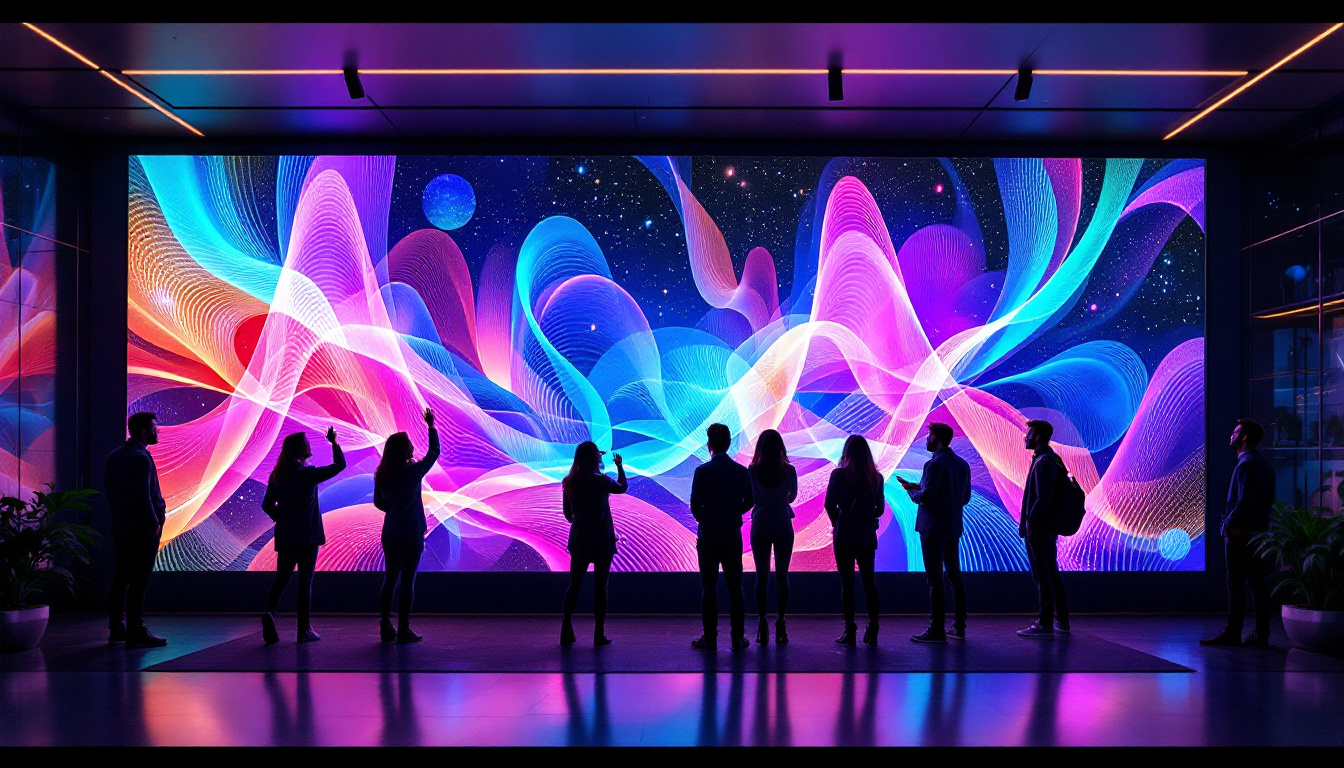In the world of modern technology, the terms LCD and LED are often used interchangeably, leading to confusion among consumers. Understanding the differences and similarities between these two types of displays is essential for making informed decisions when purchasing a monitor. This article delves into the intricacies of LCD monitors and LED displays, explaining their functionalities, advantages, and applications.
Understanding LCD Technology
Liquid Crystal Display (LCD) technology has revolutionized the way visual content is presented. It utilizes liquid crystals sandwiched between two layers of glass or plastic. When an electric current passes through these crystals, they align to allow varying amounts of light to pass through, creating images on the screen.
How LCD Works
The operation of an LCD monitor is based on a backlight system, which is typically fluorescent in traditional models. The backlight illuminates the liquid crystals, which do not emit light themselves. Instead, they manipulate the light from the backlight to create colors and images. This process involves the use of color filters that combine to produce the full spectrum of colors visible on the screen. Additionally, advancements in technology have led to the development of LED backlighting, which offers improved energy efficiency and brightness. LED backlights can be either edge-lit or full-array, with full-array providing better uniformity and contrast, enhancing the overall viewing experience.
Types of LCD Displays
There are several types of LCD displays, each with its unique characteristics. The most common types include Twisted Nematic (TN), In-Plane Switching (IPS), and Vertical Alignment (VA). TN panels are known for their fast response times, making them ideal for gaming. IPS panels, on the other hand, offer better color accuracy and wider viewing angles, which is beneficial for graphic design and multimedia work. VA panels provide excellent contrast ratios but may have slower response times. Beyond these, there are also specialized LCD technologies such as Advanced Fringe Field Switching (AFFS) and Super In-Plane Switching (S-IPS), which aim to combine the strengths of various panel types, providing enhanced performance for specific applications like professional photography or high-end gaming. Each type of LCD display serves different user needs, making it essential to choose the right one based on the intended use.
Introduction to LED Technology
Light Emitting Diode (LED) technology is often associated with LCD displays, but it is essential to understand that LED refers specifically to the type of backlighting used in these monitors. An LED display is essentially an LCD monitor that uses LEDs instead of traditional fluorescent lights for backlighting. This innovation has transformed the way we view images and videos, offering a more vibrant and dynamic visual experience that has become increasingly popular in both consumer electronics and professional applications.
Benefits of LED Backlighting
LED backlighting offers several advantages over conventional fluorescent backlighting. One of the most significant benefits is energy efficiency. LED lights consume less power, leading to lower electricity bills and a reduced environmental impact. Additionally, LED backlighting allows for thinner monitor designs, as LEDs are more compact than fluorescent tubes. This has paved the way for sleek, modern designs in televisions and computer monitors, allowing them to fit seamlessly into any décor. Furthermore, the longevity of LED technology means that these displays often last significantly longer than their fluorescent counterparts, reducing the frequency of replacements and contributing to less electronic waste.
Types of LED Displays
There are two primary types of LED displays: edge-lit and full-array. Edge-lit LED displays have LEDs positioned along the edges of the screen, which can create a slimmer profile. However, this design may result in uneven brightness across the screen. Full-array LED displays, on the other hand, have a grid of LEDs behind the entire screen, providing more uniform brightness and better contrast ratios. This technology not only enhances the viewing experience but also allows for advanced features such as local dimming, where specific areas of the screen can be dimmed or brightened independently, leading to deeper blacks and more vivid colors. As a result, full-array LED displays are often preferred for high-end televisions and professional monitors, where color accuracy and detail are paramount.
Comparing LCD and LED Displays
While LED displays are technically a subset of LCD technology, the differences in their backlighting systems result in distinct performance characteristics. Understanding these differences can help consumers choose the right display for their needs. With the rapid advancement in display technology, consumers are often faced with a plethora of options, making it crucial to understand the nuances between these two popular types of screens.
Image Quality
When it comes to image quality, LED displays generally outperform traditional LCD displays. The use of LEDs allows for better color accuracy, higher brightness levels, and improved contrast ratios. This is particularly noticeable in darker scenes, where LED displays can produce deeper blacks and more vibrant colors. Furthermore, many LED displays utilize advanced technologies such as local dimming, which enhances contrast by selectively dimming parts of the screen, allowing for an even more immersive viewing experience. This feature is especially beneficial for watching high-definition movies or playing video games, where visual detail is paramount.
Energy Efficiency
As mentioned earlier, LED displays are more energy-efficient than their traditional LCD counterparts. This efficiency not only translates into cost savings but also contributes to a smaller carbon footprint, making LED displays a more environmentally friendly option. Additionally, the longevity of LED technology means that consumers are less likely to need replacements, further reducing waste. Many modern LED displays also come equipped with energy-saving modes that automatically adjust brightness based on ambient light conditions, ensuring optimal performance while minimizing power consumption. This adaptability not only enhances user convenience but also reinforces the trend toward sustainable technology in consumer electronics.
Applications of LCD and LED Displays
Both LCD and LED displays have found widespread applications across various fields, from personal use to professional environments. Understanding where each type excels can guide consumers in their purchasing decisions.
Home and Office Use
For home and office environments, both LCD and LED monitors are suitable choices. LED displays are often preferred for their superior image quality and energy efficiency, making them ideal for tasks such as graphic design, video editing, and general computing. However, LCD monitors can still provide adequate performance for everyday tasks like word processing and web browsing. Additionally, LED displays tend to have a longer lifespan and lower power consumption, which can lead to significant savings on electricity bills over time. This makes them an attractive option not only for tech enthusiasts but also for environmentally conscious consumers looking to reduce their carbon footprint.
Moreover, the advancements in LED technology have led to the introduction of various types of displays, such as OLED and QLED, which further enhance the viewing experience with deeper blacks and more vivid colors. As remote work becomes more prevalent, the demand for high-quality monitors has surged, prompting manufacturers to innovate and provide features like blue light filters and adjustable stands to promote better ergonomics. This focus on user comfort and visual health is essential in creating a productive workspace, whether at home or in a corporate setting.
Entertainment and Gaming
In the realm of entertainment, LED displays have become the standard choice for televisions and gaming monitors. Their ability to deliver vibrant colors and high contrast makes them perfect for watching movies or playing video games. Gamers, in particular, benefit from the fast response times and high refresh rates that many LED monitors offer. These features are crucial for competitive gaming, where every millisecond counts, and can significantly enhance the overall gaming experience by providing smoother visuals and reducing motion blur.
Furthermore, the integration of smart technology into LED displays has transformed how consumers interact with their entertainment systems. Many modern LED TVs come equipped with built-in streaming services, voice control capabilities, and compatibility with smart home devices, allowing users to access a plethora of content with ease. This convergence of technology not only elevates the viewing experience but also paves the way for innovative applications in augmented reality and virtual reality, where high-resolution displays are paramount for immersion. As the gaming industry continues to evolve, the demand for cutting-edge display technology will only grow, pushing manufacturers to explore new frontiers in display innovation.
Future of LCD and LED Technology
The landscape of display technology continues to evolve, with advancements in both LCD and LED technologies. Emerging technologies such as OLED (Organic Light Emitting Diode) are gaining traction, offering even better color accuracy and contrast ratios. However, LCD and LED displays remain popular due to their affordability and reliability.
Innovations in Display Technology
As manufacturers strive to improve display performance, innovations are constantly being introduced. For example, Mini-LED technology is emerging as a new backlighting solution that offers enhanced brightness and contrast. This technology utilizes smaller LEDs, allowing for more precise control over local dimming zones, resulting in improved picture quality.
The Role of Smart Features
Smart features are becoming increasingly integrated into monitors, enhancing user experience. Many modern LED displays come equipped with smart technology that allows for internet connectivity, streaming capabilities, and built-in apps. This trend is expected to continue, making displays not just tools for viewing but also versatile entertainment hubs.
Choosing the Right Monitor for Your Needs
When selecting a monitor, understanding the differences between LCD and LED displays is crucial. Consider factors such as intended use, budget, and personal preferences. For those who prioritize image quality and energy efficiency, LED displays are often the better choice. However, for basic tasks, traditional LCD monitors may suffice.
Budget Considerations
Budget is a significant factor in choosing a monitor. LED displays tend to be more expensive than traditional LCDs due to their advanced technology and features. However, prices have been steadily decreasing, making LED monitors more accessible to a wider audience. It is essential to weigh the benefits against the cost to determine the best value for your needs.
Future-Proofing Your Purchase
Investing in a monitor is a long-term decision. As technology continues to advance, opting for a display with the latest features and capabilities can help ensure that it remains relevant for years to come. Consider future-proofing your purchase by selecting a monitor that supports higher resolutions, faster refresh rates, and smart features.
Conclusion
Understanding the differences between LCD and LED displays is key to making an informed decision when purchasing a monitor. While both technologies have their advantages, LED displays generally offer superior performance in terms of image quality, energy efficiency, and design. As technology continues to evolve, consumers can expect even more exciting developments in the world of displays. Whether for home, office, or entertainment use, choosing the right monitor can significantly enhance the viewing experience.
Discover LumenMatrix’s Advanced LED Display Solutions
Ready to elevate your visual experience with the latest in LED technology? LumenMatrix is at the forefront of LED display innovation, offering a comprehensive range of solutions tailored to your unique needs. From stunning Indoor and Outdoor LED Wall Displays to dynamic Vehicle and Sports LED Displays, our products are designed to captivate and engage. Whether you’re looking to enhance your brand’s visibility with a Custom LED Display or seeking an All-in-One solution for your digital signage needs, LumenMatrix has you covered. Experience the future of visual communication and make a lasting impression with our LED Transparent Displays and more. Check out LumenMatrix LED Display Solutions today and transform the way you share your message with the world.































